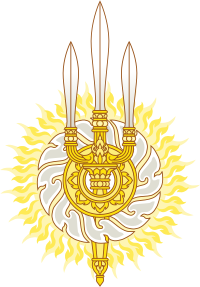Rambai Barni
Rambai Barni (Thai: รำไพพรรณี, RTGS: Ramphaiphanni, pronounced [rām.pʰāj.pʰān.nīː]), formerly Princess Rambai Barni Svastivatana (Thai: รำไพพรรณี สวัสดิวัตน์, RTGS: Ramphaiphanni Sawatdiwat; born 20 December 1904 – 22 May 1984), was the wife and Queen Consort of King Prajadhipok of Siam.
| Rambai Barni | |
|---|---|
 Queen Rambhai Barni of Siam in London 1934 | |
| Queen consort of Siam | |
| Tenure | 25 November 1925 – 2 March 1935 (husband's abdication) |
| Coronation | 25 February 1926 |
| Born | 20 December 1904 Bangkok, Siam |
| Died | 22 May 1984 (aged 79) Bangkok, Thailand |
| Burial | 9 April 1985 Royal Crematorium, Sanam Luang, Bangkok, Thailand |
| Spouse | Prajadhipok (Rama VII) |
| House | Svastivatana family (Chakri Dynasty) |
| Father | Prince Svasti Sobhana, the Prince Svastivatana Visishtha |
| Mother | Princess Abha Barni |
| Religion | Theravada Buddhism |
| Signature |  |
Early life
Princess Rambai Barni Svastivatana was born on 20 December 1904, to Prince Svasti Sobhana, the Prince of Svastivatana Visishta (a son of HM King Mongkut and Princess Piyamawadi) and Princess Abha Barni Gaganang. She was given the nickname, Thanying Na or Princess Na (Thai: ท่านหญิงนา). At the age of two she entered the palace, to be "given" to a queen for education as was the custom. In Princess Rambai Barni's case it was Queen Saovabha, wife of HM King Chulalongkorn (her aunt). From then on she lived at Dusit Palace.
After the death of King Chulalongkorn in 1910, she was moved to the Grand Palace, where she studied at the Rajini School (or Queen's School) set up by Queen Saovabha. During this period she became very close to her cousin, Queen Saovabha's youngest son, Prince Prajadhipok Sakdidej, the Prince of Sukhothai. In 1917, after completing his studies abroad and the customary period of monasticism, Prince Prajadhipok and Princess Rambai Barni were married at Bang Pa-In Palace and given the blessings of her new brother-in-law, King Vajiravudh. The couple lived at the prince's Bangkok residence, Sukhothai Palace.
Queen
.jpg)
In 1925, King Vajiravudh died without leaving any male issue (his only daughter, Princess Bejaratana Rajasuda, was born a day earlier and palace law dictated that the throne must pass to the next male full-sibling of the king). The crown was then passed on to his younger brother and heir. Princess Rambai Barni's husband ascended the throne as King Prajadhipok (or Rama VII), she was immediately invested with title of Queen Consort of Siam after her husband's own coronation ceremony. Prajadhipok followed his brother's abandonment of polygamy and instead had one queen. Both the king and queen received modern European educations in their youth. Once they inherited the throne they set about modernizing the institution of monarchy, copying European dress and customs.
The king and queen spent most of their time away from Bangkok, preferring instead to stay at the beach resort town of Hua Hin in Prachuap Khiri Khan Province at a palace called Klai Kangwon (Thai: วังไกลกังวล) (or "far from worries"), which they had built. It was here in June 1932 that the royal couple was told of the revolution instigated by the Khana Ratsadon, which demanded of the absolutist king a constitution for the people of Siam. The event would be a turning point for Rambai Barni and her husband, as the absolute rule of the House of Chakri was replaced by a constitutional regime.
In 1933, the couple left Siam for Europe where the king was due to have an eye operation in England. Despite the long distance the king continued to fight with his government back in Bangkok, through letters and telegrams. The fight came to a head when the government refused to accept Prajadhipok's ancient power of pardon. The king first threatened, but when he was ignored, decided to abdicate his throne on 2 March 1935. He was succeeded by his nephew Ananda Mahidol. The couple settled in Surrey, first at Knowle House, then at Glen Pammant.
Life in exile
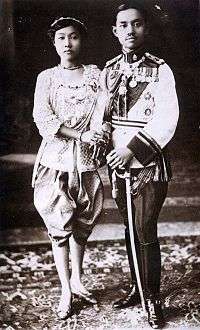
The couple moved again to Vane Court, the oldest house in the village of Biddenden in Kent. They led a peaceful life there, gardening in the morning and the king writing his autobiography in the afternoon. In 1938 the royal couple moved again to Compton House, in the village of Wentworth in Virginia Water, Surrey. The couple had no children, but adopted the infant son of one of Prajadhipok's deceased brothers. (The stepson, Prince Jirasakdi, would later serve as a RAF fighter pilot during the Battle of Britain. He died on duty in 1942.)
Due to active bombing by the German Luftwaffe in 1940, the couple again moved, first to a small house in Devon, and then to Lake Vyrnwy Hotel in Powys, Wales, where the former king suffered a heart attack. King Prajadhipok eventually died from heart failure on 30 May 1941.
Leader of the resistance
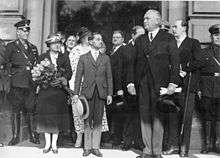
After the King's death, the queen became more involved in politics. In December 1941 the Japanese Empire invaded and occupied Thailand. The Japanese government forced the Thai government to declare war on both the United Kingdom and the United States. The Free Thai Movement was set up partially by Thai exiles living abroad. The movement included many diplomats, students, and members of the royal family.
The queen and her brother, Prince Subhasvastiwongse Snith Svastivatana, made clear their Free Thai sympathies and used their connections to assist like-minded students in organising a resistance movement in the UK. She was among the four women who volunteered for non-military tasks with the Free Thai. Despite not being an official member, the queen assisted the movement through fund raising and lobbying influential ministers.
Return and death
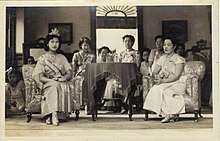
In 1949, the queen was invited to return to Thailand, bringing with her the king's ashes. After her return she continued to carry out many official duties on behalf of the new king, Bhumibol Adulyadej. She spent the rest of her life at Sukhothai Palace, dying in 1984 at the age of 79. She was cremated in a grand royal funeral presided over by her nephew the king at Sanam Luang in front of the Grand Palace.
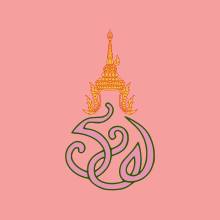
Honours
National
_ribbon.svg.png)
_ribbon.svg.png)
_ribbon.svg.png)
_ribbon.png)
_ribbon.svg.png)
_ribbon.svg.png)
_ribbon.svg.png)
Foreign


Ancestry
| Ancestors of Rambai Barni | |||||||||||||||||||||||||||||||||||||||||||||||||||||||||||||||||||||||||||||||||||||||||||||||||||||||||||||||||||||||||||||||||||||||||||||||||||||||||||||||||||||||||||||||||||||||||||||||||||||||||||||||||||||||||||||||||||||||||||||||||||||||||||||||||||||||||||||||||||||||||
|---|---|---|---|---|---|---|---|---|---|---|---|---|---|---|---|---|---|---|---|---|---|---|---|---|---|---|---|---|---|---|---|---|---|---|---|---|---|---|---|---|---|---|---|---|---|---|---|---|---|---|---|---|---|---|---|---|---|---|---|---|---|---|---|---|---|---|---|---|---|---|---|---|---|---|---|---|---|---|---|---|---|---|---|---|---|---|---|---|---|---|---|---|---|---|---|---|---|---|---|---|---|---|---|---|---|---|---|---|---|---|---|---|---|---|---|---|---|---|---|---|---|---|---|---|---|---|---|---|---|---|---|---|---|---|---|---|---|---|---|---|---|---|---|---|---|---|---|---|---|---|---|---|---|---|---|---|---|---|---|---|---|---|---|---|---|---|---|---|---|---|---|---|---|---|---|---|---|---|---|---|---|---|---|---|---|---|---|---|---|---|---|---|---|---|---|---|---|---|---|---|---|---|---|---|---|---|---|---|---|---|---|---|---|---|---|---|---|---|---|---|---|---|---|---|---|---|---|---|---|---|---|---|---|---|---|---|---|---|---|---|---|---|---|---|---|---|---|---|---|---|---|---|---|---|---|---|---|---|---|---|---|---|---|---|---|---|---|---|---|---|---|---|---|---|---|---|---|---|---|---|---|
| |||||||||||||||||||||||||||||||||||||||||||||||||||||||||||||||||||||||||||||||||||||||||||||||||||||||||||||||||||||||||||||||||||||||||||||||||||||||||||||||||||||||||||||||||||||||||||||||||||||||||||||||||||||||||||||||||||||||||||||||||||||||||||||||||||||||||||||||||||||||||
Further reading
- Stowe, Judith A. Siam Becomes Thailand: A Story of Intrigue. C. Hurst & Co. Publishers, 1991
- Baker, Christopher John, & Phongpaichit, Pasuk. A History of Thailand. Cambridge University Press, 2005
Rambai Barni Chakri Dynasty Born: 20 December 1904 Died: 22 May 1984 | ||
| Regnal titles | ||
|---|---|---|
| Preceded by Prabai Sucharitakul |
Queen consort of Siam 1925–1935 |
Vacant Title next held by Sirikit Kitiyakara |
